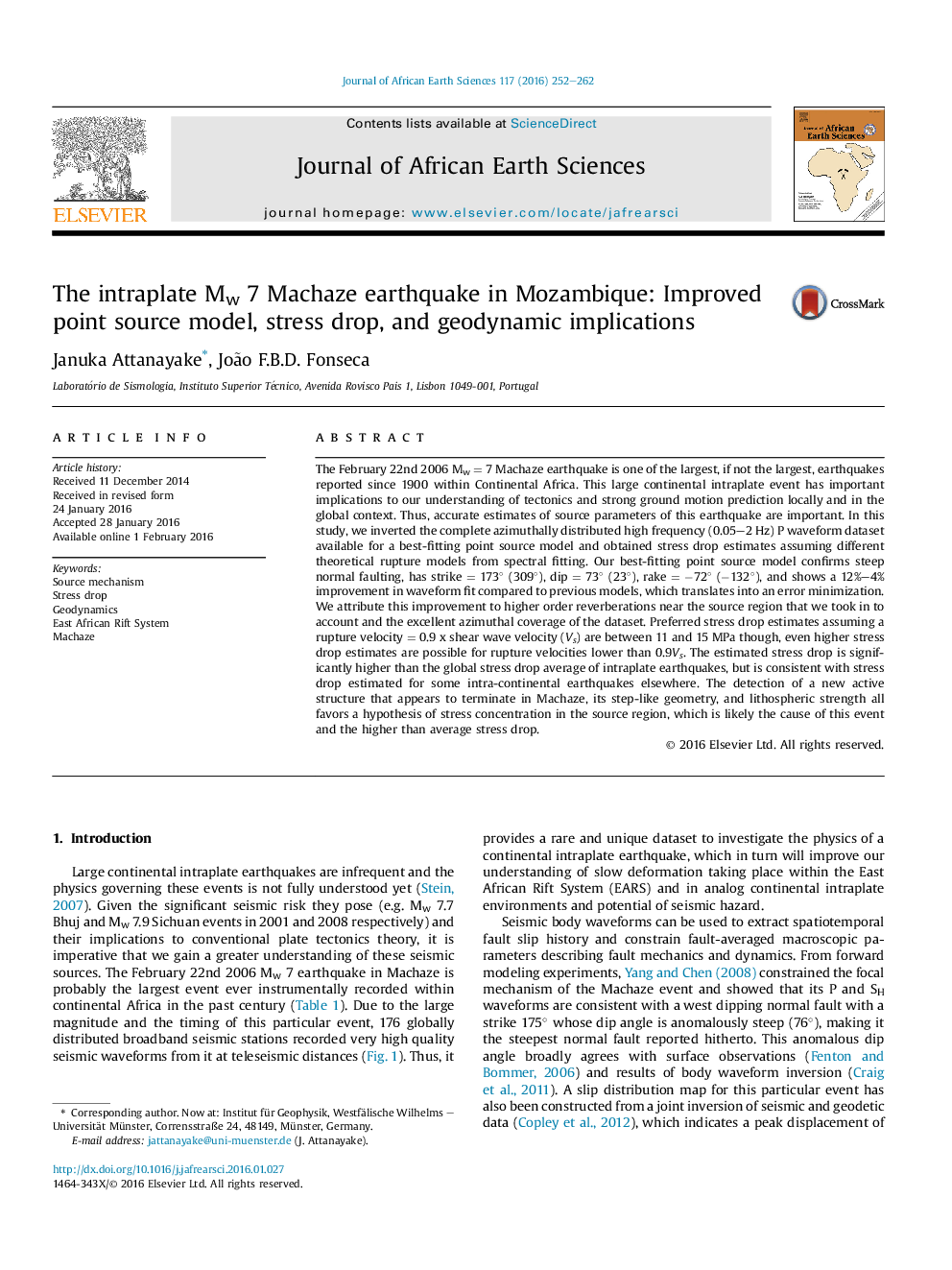| Article ID | Journal | Published Year | Pages | File Type |
|---|---|---|---|---|
| 4728329 | Journal of African Earth Sciences | 2016 | 11 Pages |
•High precision source parameters confirm anomalous steep normal faulting (73°).•Stress drop in the 11–15 MPa range is higher than global average.•Possible relation to a newly detected active seismic structure.
The February 22nd 2006 Mw = 7 Machaze earthquake is one of the largest, if not the largest, earthquakes reported since 1900 within Continental Africa. This large continental intraplate event has important implications to our understanding of tectonics and strong ground motion prediction locally and in the global context. Thus, accurate estimates of source parameters of this earthquake are important. In this study, we inverted the complete azimuthally distributed high frequency (0.05–2 Hz) P waveform dataset available for a best-fitting point source model and obtained stress drop estimates assuming different theoretical rupture models from spectral fitting. Our best-fitting point source model confirms steep normal faulting, has strike = 173° (309°), dip = 73° (23°), rake = −72° (−132°), and shows a 12%–4% improvement in waveform fit compared to previous models, which translates into an error minimization. We attribute this improvement to higher order reverberations near the source region that we took in to account and the excellent azimuthal coverage of the dataset. Preferred stress drop estimates assuming a rupture velocity = 0.9 x shear wave velocity (Vs) are between 11 and 15 MPa though, even higher stress drop estimates are possible for rupture velocities lower than 0.9Vs. The estimated stress drop is significantly higher than the global stress drop average of intraplate earthquakes, but is consistent with stress drop estimated for some intra-continental earthquakes elsewhere. The detection of a new active structure that appears to terminate in Machaze, its step-like geometry, and lithospheric strength all favors a hypothesis of stress concentration in the source region, which is likely the cause of this event and the higher than average stress drop.
Graphical abstractFigure optionsDownload full-size imageDownload as PowerPoint slide
